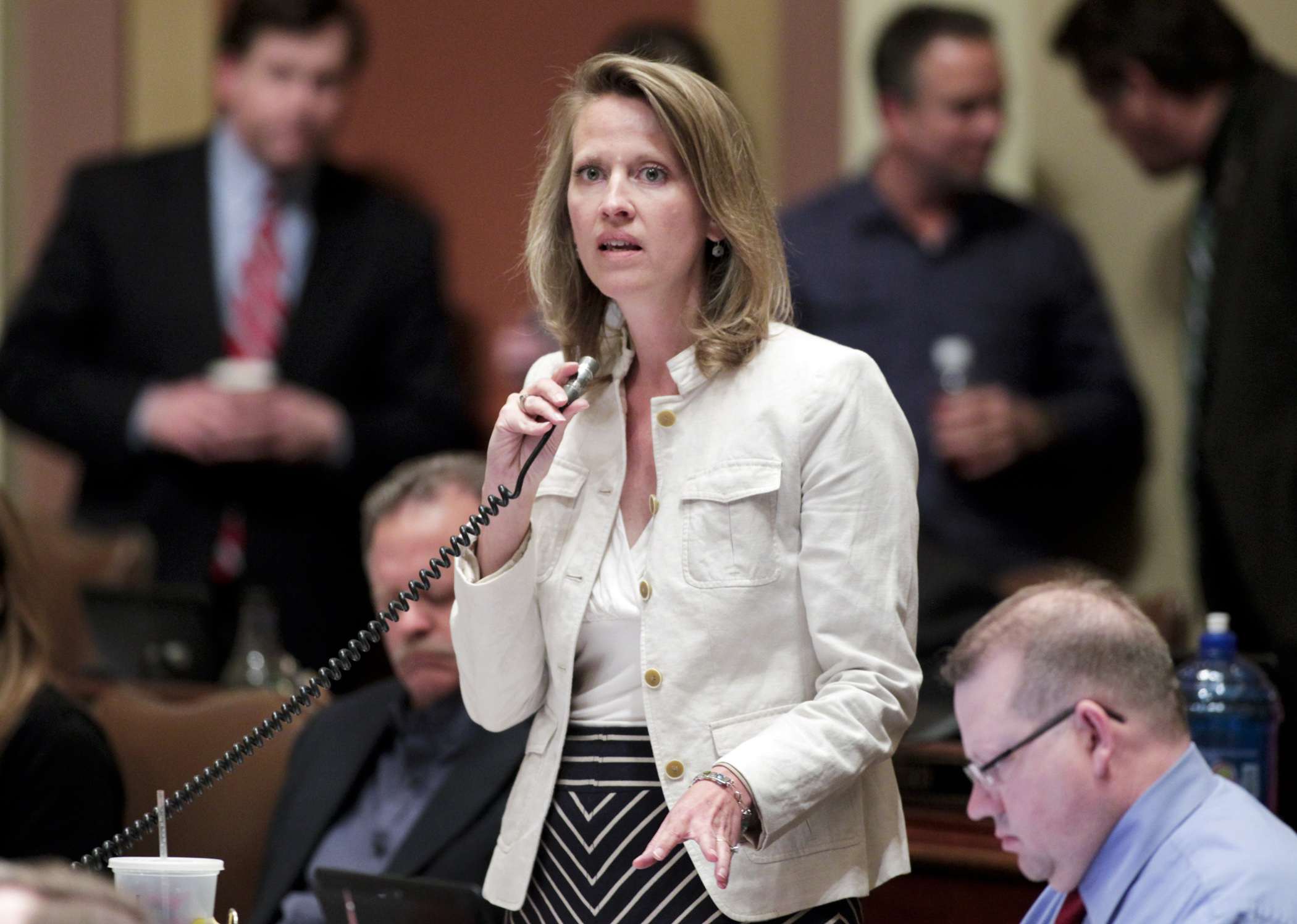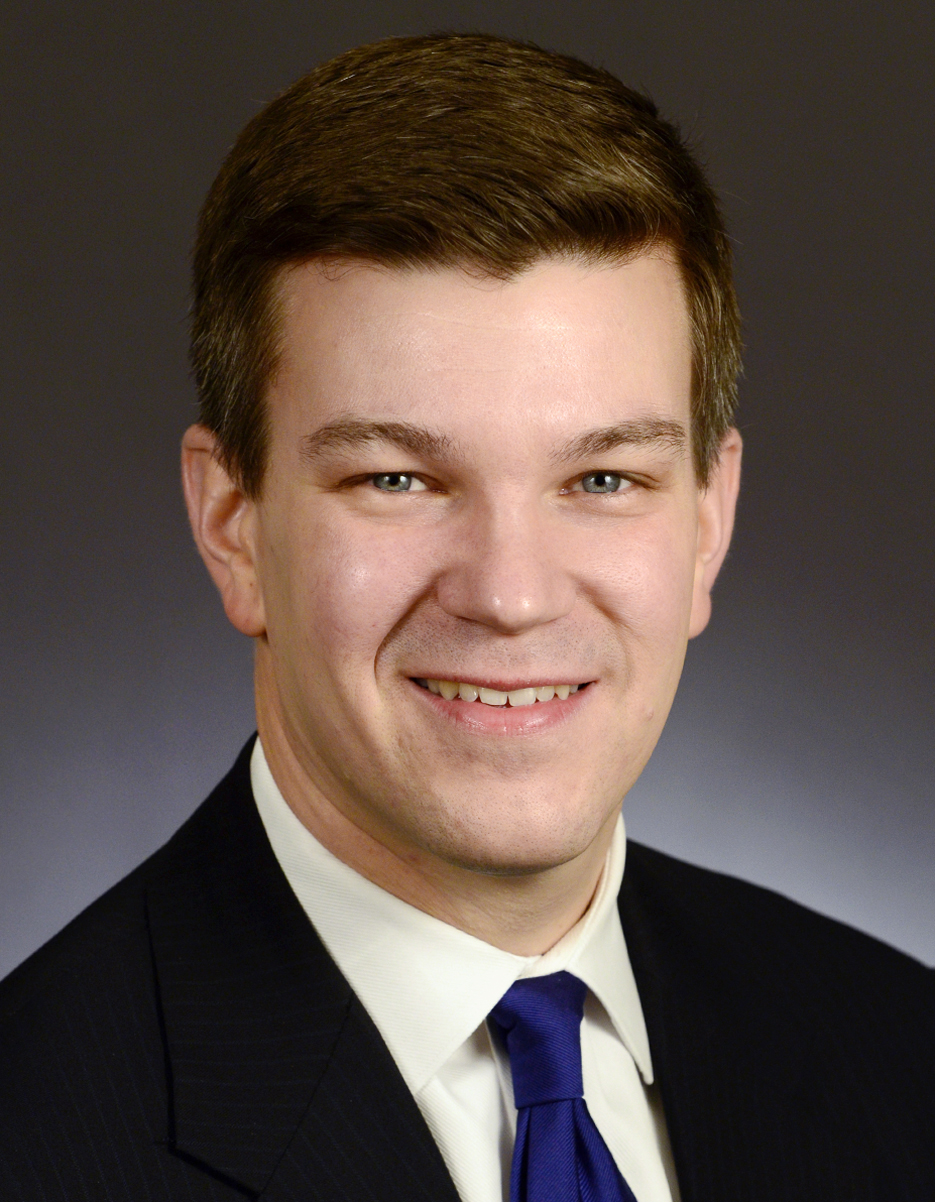House passes omnibus state government finance bill; sends back to Senate

The architect of the omnibus state government finance bill wants to follow the lead of the state’s top official in changing the way state government operates.
“We’ve heard from Gov. Dayton that he is interested in enacting real reform here at the state level in this cycle of his governorship and I couldn’t agree more,” said Rep. Sarah Anderson (R-Plymouth). “When it comes to real reform, we as a state government need to lead the way and show leadership.”
She sponsors HF495/SF888* that was passed 73-55 early Saturday morning. It now heads back to the Senate for concurrence. If the Senate — which approved its version 36-27 April 20 — does not agree with the changes, a conference committee would likely be called to resolve the differences. Sen. Tom Saxhaug (DFL-Grand Rapids) is the Senate sponsor.
The bill was amended Wednesday by the House Ways and Means Committee to include the contents of HF495, and four amendments were added during the 3 ½-hour floor debate.
It checks in at nearly $902.64 million in General Fund spending, a cut of $67.4 million — or 6.9 percent — from current state agency level funding. (View the spreadsheet)
“We’ve seen over the last two years that government spending has increased by 12-15 percent. That’s an unsustainable rate,” Anderson said. “What this bill attempts to do is try to provide greater oversight, greater accountability of our tax dollars and just more effective and accountable government to our citizens.”
Rep. Sheldon Johnson (DFL-St. Paul) said this bill is full of shifts and gimmicks, calling it an easy “no” vote.
“What we have is more work with less staff, no overall strategic plan at all, just arbitrary cuts. Add in the elimination of public financing and the end of spending limits and you have one heck of a bad bill.”
More than half of the proposed reduction — $36 million — would be a one-time reduction in state contribution to the Public Employees Retirement Association for Minneapolis pension reimbursement. Anderson previously said a recent actuarial report indicated that reducing the state share would still keep the fund on solid footing, in part, because the employer share doesn’t change and less overall money is needed for the fund.
Other General Fund reductions include:
- 9.6 percent overall to the Department of Administration (within the department is grants to public broadcasting, which have a 25.4 percent base reduction);
- 8.5 percent to Minnesota Management & Budget;
- 6.5 percent for constitutional offices;
- 5.9 percent for the Department of Human Rights;
- 5 percent for the House of Representatives and Senate; and
- 4.9 percent for the Minnesota Amateur Sports Commission.
The Campaign Finance and Public Disclosure Board would have its operating budget reduced by 10.7 percent and the public subsidy program is eliminated, including the ability for individuals to get a $50 refund for specific political contributions.
Also repealed would be the state elections campaign fund, which provides public financing of election campaigns for the state’s constitutional offices and legislative races. Gone, too, would be laws related to the public subsidy program implementation, including those that set spending limits for candidates that accept the public subsidy.
“You are blowing a Koch-brothers hole in our democracy,” said House Minority Leader Paul Thissen (DFL-Mpls). “There will be no limitation on what we can spend on our campaign. It will allow us to solely rely on PACs and lobbyists to fund our campaigns. So we can spend $200,000 and we can raise all that money from PACs and lobbyists, from corporate special interests, and we’re cutting out the ability of individual people to participate in our democracy.”
Anderson cited examples of minority party members in safe districts using money donated for their campaign that ended up being transferred it to the House DFL caucus.
“Nobody in the state of Minnesota is asking that their tax dollars go to some candidate who’s then going to turn around right away and send it over to their party,” she said. “They don’t want to see their tax dollars being used in a public subsidy so somebody can go buy some food maybe for some volunteers.”
Rep. Ryan Winkler (DFL-Golden Valley) unsuccessfully tried to add a pair of amendments — one of which was the contents of HF43 — to close what he views as “campaign finance law loopholes,” by saying “who is paying when you are trying to get somebody in office or out of office.” One was ruled out of order and the other defeated 78-51.
“All money should be disclosed,” said Rep. Tama Theis (R-St. Cloud). However, she and Rep. Peggy Bennett (R-Albert Lea) said the issue should first be heard by the House Government Operations and Elections Policy Committee and properly work its way through the legislative process.
“Right now, to pass this would be irresponsible because we need to very carefully balance our first amendment rights of our citizens along with the transparency issue,” Bennett said.
The bill allows for potential state agency head raises, but they could not exceed the lesser of the percentage increase over the past 12 months in Minnesota median household income or the consumer price index. The governor doled out nearly $803,000 in pay increases — ranging from $22,407 to $35,475 — to state agency heads in January. They were ultimately reined back in by the Legislature, although the governor can still make the change on July 1, 2015, without legislative consent.
Amendments adopted
A quartet of amendments were added to the bill during House debate:
- elimination of a signature requirement for the state to pay a bill if a member, constitutional officer, judge or head of a state agency’s monthly long-distance telephone bill is below $5;
- removal of a provision that legislative auditor data relating to an evaluation of an economic development incentive program will be treated the same as the auditor’s audit data;
- ensuring any expense reductions to the House of Representatives be equally split amongst staff and members; and
- correction of an error whereby MNsure technology was taken out of MN.IT. It also ensures that he mistake would not happen for another state agency in the future.
Ethnic council changes
With a goal of improving economic and social conditions of its constituency, three of the state’s four ethnic councils would be revamped and renamed as the Minnesota Council on Latino Affairs, Minnesota African Heritage Council and Council on Asian-Pacific Minnesotans. Each council would have 15 members: 11 appointed by the governor and four legislators. Additionally, the Legislative Coordinating Commission would be charged with appointing an executive director for each council by Nov. 15, 2015. Current executive directors may apply. Each director is now appointed by the respective council.
Rep. Kim Norton (DFL-Rochester) offered, then withdrew, an amendment to establish a Task Force on Diverse Ethnic Councils “to engage in collaborative dialog to analyze, identify, and recommend changes for the three diverse ethnic councils” and report back to the Legislature by Jan. 16, 2016.
“We all want to be heard. We don’t want things done to us; we want things done with us,” she said. “I’m going to ask that as this bill moves into conference committee that continued work can be done to make some modifications so that all the councils can come together and move ahead.”
MORE: What’s in HF495/SF888*? A list of selected bills that have been incorporated in part or in whole into the omnibus state government finance bill
Related Articles
Search Session Daily
Advanced Search OptionsPriority Dailies
Ways and Means Committee OKs proposed $512 million supplemental budget on party-line vote
By Mike Cook Meeting more needs or fiscal irresponsibility is one way to sum up the differences among the two parties on a supplemental spending package a year after a $72 billion state budg...
Meeting more needs or fiscal irresponsibility is one way to sum up the differences among the two parties on a supplemental spending package a year after a $72 billion state budg...
Minnesota’s projected budget surplus balloons to $3.7 billion, but fiscal pressure still looms
By Rob Hubbard Just as Minnesota has experienced a warmer winter than usual, so has the state’s budget outlook warmed over the past few months.
On Thursday, Minnesota Management and Budget...
Just as Minnesota has experienced a warmer winter than usual, so has the state’s budget outlook warmed over the past few months.
On Thursday, Minnesota Management and Budget...
